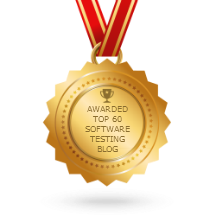Explore how healthcare software solutions are revolutionizing medical service delivery and management, innovating patient care and operational efficiency. From digitizing patient records to leveraging advanced AI systems, we delve into the transformative impact of technology on healthcare.


By Paloma Peirano
Thanks to the technological advancements of recent years, software has become a cornerstone in enhancing the quality of patient care, streamlining operations, and fostering innovation.
From digitizing patient records to integrating advanced artificial intelligence systems, healthcare software applications have revolutionized how medical services are delivered and managed.
In this comprehensive guide, we explore the main applications of software in healthcare, delving into their functionalities, benefits, and the challenges they pose.
By understanding these technologies, healthcare providers can better navigate the complexities of modern healthcare delivery, ultimately leading to improved patient outcomes and operational efficiencies.
Enhance patient care with us! We enable your healthcare systems to keep patient data safe and reliable, comply with regulations, and adhere to industry standards while reducing risk and costs.
Main Applications of Software in Healthcare
In this section, we will guide you through the diverse applications of healthcare software. Our journey into the digital transformation of healthcare begins here, setting the stage for a deeper understanding of how technology is reshaping the landscape of medical services.
Electronic Health Records (EHR)


An electronic health record (EHR) is a digital version of a patient’s medical history maintained by healthcare providers, including all the vital clinical data like medical issues, medications, vital signs, and lab data. Many EHR systems include a patient portal where patients can access their health records, test results, and other important information.
Transitioning from paper to electronic records offers benefits such as reduced costs, improved care quality, and enhanced record mobility.
Effective EHR systems must ensure complete data, resilience, high availability, and security compliance. However, challenges such as funding, technology, organizational issues, and attitudes hinder their adoption.
With increased trust, EHRs can enhance healthcare delivery, public health monitoring, and health research, leading to more effective and efficient outcomes, highlighting the importance of information technology.
Telemedicine and Remote Patient Monitoring


Defined as “the utilization of medical information exchanged from one site to another via electronic communications to improve a patient’s health”, telemedicine holds immense potential.
It may significantly impact the delivery of healthcare to patients, enhancing access to medical care across both urban and rural landscapes. Telemedicine platforms enhance patient communication by facilitating real-time interactions between patients and healthcare providers.
It also addresses the challenges of twenty-first-century healthcare systems, such as increased demands, aging populations, citizen mobility, global competitiveness, large amounts of information management, and the need for improved healthcare provision. All within the constraints of limited budgets and spending.
The success of telemedicine hinges on the digital readiness and competency of both patients and healthcare professionals, as well as on the regulatory frameworks that govern the exchange and use of medical data.
Hospital Information Systems (HIS)
A health information system (HIS) refers to a system designed to manage healthcare data, encompassing systems that facilitate the collection, storage, management, and transmission of patient’s electronic medical records (EMR).
It also supports clinical decision-making processes, operational management in hospitals, and systems that assist in healthcare policy decisions.
These systems can improve patient outcomes, inform research, and influence policy-making and decision-making. Since HIS commonly accesses, processes, or maintains large volumes of sensitive data, ensuring security is a primary concern.
Experience our impact! Dive into our case study on how we optimized EsSalud’s performance, Peru’s premier national insurance company, through comprehensive diagnostic and technical analysis for system stabilization.
Benefits of Health Information Systems
Health information systems tend to target efficiency and data management. The main drivers of health information systems are:
- Data analytics: Gather, compile, and analyze health data they constantly produce.
- Collaborative care: Allow Health information exchanges (HIEs) among different providers.
- Cost control: Using digital networks to exchange healthcare data enhances efficiency and saves costs.
- Revenue Cycle management: Automate billing, manage claims, and ensure prompt reimbursement for medical services, streamlining the financial operations of healthcare providers.
- Community health insights: Enable the identification of health trends within populations through the analysis of patient data, aiding in proactive healthcare delivery.
In this matter, Epic is a leading provider of large-scale implementations used in the United States and worldwide. Serves a wide spectrum of healthcare settings, from labs to urgent care.
It provides comprehensive healthcare software solutions, including EHR, patient portals, interoperability, revenue management, and analytics. This extensive reach highlights Epic‘s ability to cater to the diverse needs of different healthcare environments across the industry.
Mobile Health Applications (mHealth)


Mobile health applications enable users to monitor their well-being, manage chronic conditions, and track physical activity and diet, empowering them to take control of their daily health.
Managing mHealth poses a challenge for the healthcare industry, requiring adaptation of systems and processes to utilize these new tools effectively.
The stringent regulations in this sector, concerning sensitive patient data and medications, present an additional hurdle to fully leveraging mobile health while complying with existing laws and regulations.
While a variety of mHealth apps exist, most operate in isolation. Integrating mHealth into existing healthcare services is a significant challenge.
Don’t miss this article! How to Take The Security of Your Mobile Apps to the Next Level of OWASP
Artificial Intelligence (AI) and Machine Learning (ML)
AI’s growing role in healthcare encompasses diagnosis, treatment recommendations, patient engagement, and administrative tasks.
While AI can perform human tasks effectively, large-scale adoption necessitates addressing regulations and ethical issues, such as transparency and bias.
Types of AI in Healthcare include:
- Machine Learning: Key for precision medicine, predicting treatment success, and identifying diseases. Includes neural networks and deep learning.
- Natural Language Processing (NLP): Used for clinical documentation and patient interaction.
- Expert Systems: Rule-based systems for clinical decision support.
- Physical Robots: Assist in surgeries and hospital logistics.
- Robotic Process Automation (RPA): Handles repetitive administrative tasks like billing and records management.
AI will play a crucial role in precision medicine and imaging analysis. Adoption challenges include regulatory approval, EHR integration, standardization, clinician training, and funding.
Why? Because its capabilities allow for scalable, precise, and efficient analysis of vast data sets, enabling personalized software healthcare solutions on a global scale.
AI applications can manage the vast amounts of data generated in the medical field, uncovering valuable insights hidden in big medical data. Healthcare stakeholders may use AI-based tools to review historical data, predict outcomes, and identify optimal actions, making AI increasingly essential for decision-making.
Furthermore, AI-powered systems are used for remote patient treatment, prescription transcription, enhancing doctor-patient interactions, drug research and development, and patient diagnosis. So it can help healthcare organizations cut costs by deploying sophisticated, accurate technologies suited to specific functions.
AI also aids physicians by automatically identifying potential issues and alerting medical staff, thus lowering the likelihood of misdiagnoses and medical malpractice claims, which can be costly.
Real- World Example of Healthcare Software Solutions for Medical Prescriptions


At Abstracta, we’re currently embarking on a groundbreaking project for a hospital in the U.S. that is grappling with the challenge of manually digitalizing 500 to 600 orders daily. This is not only tedious and time-consuming, but also costs them 8 dollars to digitize each recipe manually.
Our project focuses on the digitization of medical prescriptions with AI support. By automatically capturing critical data such as patient information, diagnosis, and details of the treating physician, Healtech aims to revolutionize the way the hospital manages its prescription orders.
The potential benefits are two-fold: a significant acceleration in patient treatment and a substantial reduction in costs. This endeavor underscores our dedication to harnessing technology to improve healthcare efficiency and patient care.
Interested in exploring how copilots or assistants can revolutionize your operations? Discover our tailored solutions and see how we can transform your approach.
Compliance and Regulations in Healthcare


In the US, HIPAA (Health Insurance Portability and Accountability Act) establishes specific standards to protect patient medical information.
Covered entities, such as healthcare providers, must implement security measures to ensure key rules like Privacy, Security, and Breach Notification of protected health information (PHI).
When a cover entity engages with a business associate, such as a cloud service provider, it enters into a contract called a Business Associate Agreement (BAA) to outline permissible uses of PHI. In this line, Microsoft Azure supports HIPAA compliance; and offers a HIPAA BAA as part of the Microsoft Product Terms.
Still, it is important to mention that using Azure doesn’t automatically impart compliance to your cloud solutions. Your organization is responsible for ensuring an adequate compliance process and particular use of Azure aligned with HIPAA.
In the EU, GDPR (General Data Protection Regulation) and in Canada, PIPEDA (Personal Information Protection and Electronic Documents Act), protect personal data, including health data.
Health Data Security and Privacy


Security is a critical concern in healthcare systems due to the handling of vast amounts of sensitive and confidential data. Given that medical information systems are frequently linked to both internal networks and the Internet, they are exposed to potential vulnerabilities from external devices and equipment introduced into hospital environments.
Personal health information, valued up to 50 times more than financial data, attracts cybercriminals to the healthcare sector. This attraction marks a significant shift from targeting banks and retail sectors to focusing on healthcare facilities, emphasizing the critical nature of medical data.
Ransomware attacks, where malicious software locks access to a device’s information, infrastructure, or networks until receiving a ransom, disrupt medical procedures and patient care significantly. These attacks cause treatment delays and force the redirection of care.
Furthermore, hackers manipulating medical devices can lead to false readings, incorrect medication dosages, and ultimately, endanger patient safety.
According to a National Library of Medicine (NIH) study, the growing digitization of medical care has advanced the acknowledgment of issues about secure storage, access to patients’ medical records, ownership, and medical data from associated sources.
“Every year, there are more security and privacy breaches.n 2017, more than 300 breaches were reported, and up to 37 million records were affected during 2010–2017,” the report outlines.
This urgency has only intensified with the rapid development of healthcare software solutions, bridging the gap between potential vulnerabilities and robust security measures.
Identity Theft
Identity theft is a prevalent concern, with cybercriminals exploiting stolen personal data like insurance details, names, policy numbers, birth dates, diagnosis codes, and bank information for insurance fraud, reselling medical supplies, and filing fraudulent claims.
Mitigating cyber risks and preventing unauthorized system access are critical objectives to protect patient data and maintain operational integrity.
While new healthcare approaches are feasible due to AI, new types of cyber-attacks will also become possible. These attacks may use AI systems to perform specific tasks more effectively than humans or exploit flaws in AI systems that humans cannot control.
Protect your software data! Our security testing services safeguard against cyber threats. Don’t wait for an attack; secure your systems now.
Interoperability in Health Systems
The digitalization of healthcare offers significant improvements but also faces challenges due to segregated data and legal regulations. Interoperability solutions can help overcome these challenges and reduce healthcare costs significantly through the seamless sharing of health data among providers, payers, and labs.
Interoperability enables healthcare software solutions providers access to comprehensive real-time patient data, reducing medical errors, preventing duplicate tests, and speeding up clinical decision-making. This leads to better patient care and shorter hospital stays.
Semantic Interoperability
Among the various levels of interoperability, semantic interoperability stands out because it ensures that the receiving system understands the meaning of the sent information, even if the sending system does not know the receiving system’s algorithms.
Standards like HL7, FHIR, DICOM, and CDA, along with terminologies like SNOMED CT, are essential for consistent data representation and interoperability in healthcare. Service-oriented architecture (SOA) further promotes interoperability by allowing services to communicate across different platforms, enhancing scalability, reliability, and efficiency.
Despite the benefits, the healthcare industry faces several barriers to achieving full interoperability. These include diverse standards, legacy systems, and resistance to digital transformation. Overcoming these challenges requires a coordinated effort to integrate comprehensive data and improve healthcare management.
Emerging Technologies in the Health Sector
As we delve into the transformative power of technologies like Blockchain, the Internet of Things (IoT), and Augmented Reality (AR) in healthcare, the innovation potential is limitless.
Each of these technologies offers unique opportunities to enhance patient care, streamline operations, and secure sensitive data.
Blockchain
Blockchain is being suggested as a powerful solution to tackle several critical challenges, particularly in securely sharing health records and safeguarding data privacy.
So, how does it work? By creating decentralized and trustless environments—this means you don’t need to rely on people or institutions for the system to function effectively. This setup is ideally suited for tasks such as automating the verification of insurance claims’ accuracy and legitimacy and managing public health data with less dependence on external parties. The result? Enhanced security and ownership of data.
However, despite its potential, blockchain adoption faces challenges such as regulatory barriers and user unfamiliarity. Organizations may invest cautiously in blockchain, and its full potential is yet to be realized. Current research is focusing on overcoming these barriers and promoting the benefits of blockchain technology.
Internet of Things (IoT)
With the rise in chronic illnesses, according to a study published by NIH, the demand for medical services has increased significantly, putting immense pressure on healthcare professionals and affecting the quality of life due to high medical costs.
Integrating the Internet of Things (IoT) into healthcare can address these challenges by improving service delivery and efficiency. “Recent developments in the health sector have consistently shown that combined technologies have the potential to improve healthcare services and assist healthcare professionals in the optimal and efficient delivery of healthcare solutions”, states the report.
How exactly can IoT help on this path?
The Internet of Things allows devices to communicate over the Internet. It offers numerous benefits, including better patient monitoring and reduced costs through technologies like RFID, sensors, and cloud computing. This integration is crucial for early disease diagnosis and intervention.
Furthermore, the Internet of Medical Things (IoMT) specifically supports healthcare by enabling remote monitoring through wearable devices. These devices can help in emergencies by providing timely alerts to caregivers, improving patient outcomes.
Despite its benefits, IoT adoption in healthcare remains slow due to integration challenges and low user readiness. Successful implementation requires a structured approach to identify technological and operational needs.
Augmented Reality and Virtual Reality


As stated by Mobi Health News, healthcare is experiencing a revolution with Augmented Reality (AR) and virtual reality (VR) technologies transforming surgical training, mental health care, and patient monitoring.
These technologies offer unparalleled precision and immersion, enabling hyper-realistic simulations for surgeons, 3D visualizations for accurate diagnoses, and remote monitoring for continuous care. AR and VR also provide innovative mental health therapies and encourage exercise through gamification.
While challenges like data privacy and technological disparities exist, the potential benefits for patient care and healthcare accessibility are immense, marking a significant paradigm shift in the field.
Ready to revolutionize your healthcare software solutions and services? Let us help you harness the power of these emerging technologies with our expert healthcare software testing services.
Challenges in Healthcare Software Development


The development of healthcare software solutions is fraught with challenges that span the management of Big Data, ensuring usability and accessibility, integrating Artificial Intelligence (AI), and adhering to stringent regulatory compliance.
Each of these areas presents unique hurdles that developers must overcome to create solutions that are not only innovative but also practical, secure, and compliant with industry standards.
As we delve deeper into these challenges, it’s clear that addressing them requires a multifaceted approach, leveraging the latest technological advancements and adhering to best practices in software development. Now, let’s take a closer look at each of these critical areas.
Big Data Management


Nowadays, the adoption of electronic medical records, combined with data from sensors and patient-generated information on social media, has significantly increased the volume of information healthcare systems manage. This influx encompasses the already substantial amounts of data traditionally produced in healthcare settings.
In the healthcare sector, the flow of Big Data encompasses a wide array of information types, including clinical, biometric, financial, and scientific research data, alongside patient-provided details and social media interactions.
This diversity and volume of data are ever-increasing, presenting challenges not just in terms of sheer quantity but also in the complexity of processing this information effectively.
The core issue with Big Data in healthcare lies in its unprecedented variety—different types of data, formats, and the speed at which it needs to be analyzed to continuously provide essential insights. To navigate this complexity, there’s a pressing need for advanced analytical tools and technologies capable of managing and making sense of unstructured data.
Moreover, the challenge extends beyond merely handling vast amounts of information. It involves optimizing big data storage, analysis, and the presentation of results, all within a clinical context. This requires a strategic approach to ensure that data-driven decisions are not just feasible but are implemented in ways that enhance patient care and operational efficiency.
Usability and Accessibility


In the world of Health Information Technology (HIT), ensuring that systems are both usable and accessible to professionals and patients alike is crucial for creating effective designs.
This focus helps to minimize errors and fosters the wider adoption of technological solutions. The goal here is to set clear usability standards and rigorously apply them through detailed testing methods.
As the landscape of HIT certification and design continues to evolve, embracing a user-centered approach becomes increasingly important. This approach involves thorough validation in a variety of testing environments to confirm consistency and reliability. Usability testing should concentrate on real-world user performance, measuring task completion, and accuracy, minimizing critical errors.
Manufacturers need to provide usability reports and user requirements that align with industry standards. The ultimate aim is to design HIT systems that support healthcare practitioners in delivering optimal care efficiently and safely, while also catering to diverse user needs and accessibility requirements.
To achieve these aims, it’s vital to continually customize and refine these systems based on metrics of human performance. This enables HIT systems to effectively meet the usability and accessibility objectives for users across the spectrum.
Make your healthcare software solutions accessible to all with our accessibility testing services!
Artificial Intelligence


Within the realm of healthcare innovation, Artificial Intelligence (AI) emerges as a transformative force, reshaping patient care, diagnostics, and operational workflows. The integration of AI into healthcare systems heralds a new era of precision and efficiency but also introduces a spectrum of challenges that must be meticulously addressed.
Key considerations and challenges of AI in healthcare include:
- Enhancing Patient Care: AI’s potential to refine diagnosis and treatment planning promises significant improvements in patient outcomes.
- Operational Efficiency: AI automates numerous administrative tasks, alleviating the burden on healthcare professionals and streamlining processes.
- Data Privacy and Ethics: The deployment of AI raises critical concerns regarding data privacy, ethical decision-making, and the transparency of algorithms.
- Integration Hurdles: Seamlessly incorporating AI technologies into existing healthcare infrastructures poses a complex challenge.
- Unlocking Potential: Despite these obstacles, the transformative potential of AI in healthcare is vast, offering a future of more accurate diagnoses and tailored patient care.
The path to fully harnessing AI in healthcare is fraught with hurdles, from ensuring data security and ethical integrity to achieving interoperability with current systems. As we confront these challenges, the overarching goal remains clear: to leverage AI’s capabilities to foster a healthcare environment that is more responsive, efficient, and patient-centered.
Overcoming these barriers will be crucial in realizing the full promise of AI in healthcare, marking a pivotal step towards a future where technology and human expertise converge to enhance patient care and operational efficiency.
Don’t miss this article! Artificial Intelligence Business Ideas: Bring your Projects to Life
Regulatory Compliance


Navigating the landscape of regulatory compliance is essential when it comes to creating and using medical practice management software, remote patient monitoring software, health tracking apps, medical billing software, and, all in all, any digital healthcare solutions for healthcare practices.
This should involve aligning with the legal standards established by regulatory bodies to guarantee the safety, security, and efficacy of healthcare software solutions. Achieving compliance is not just about meeting legal obligations; it’s about ensuring patient safety, securing data, and building trust with healthcare providers, regulatory authorities, and patients.
The journey to maintain regulatory compliance is marked by several challenges: staying abreast of ever-changing regulations, deciphering complex legal frameworks, harmonizing compliance with the drive for innovation, guaranteeing system interoperability, and mitigating cybersecurity risks.
Falling short of compliance standards in healthcare software development can have severe consequences, including legal penalties, damage to reputation, loss of patient trust, data breaches, fines, and the potential for litigation. These risks underscore the importance of compliance as a cornerstone for protecting both patients and healthcare organizations.
Explore the relevance of software testing in healthcare with Federico Toledo and Alan Brande on this episode of Quality Sense Podcast.
In a Nutshell


As we explore the evolving landscape of healthcare technology, it’s evident that innovations such as AI, Blockchain, and IoT are setting the stage for a transformative era in healthcare. These technologies promise to make healthcare more personalized, efficient, and accessible, revolutionizing diagnostics, treatments, and patient management.
The journey towards integrating these advancements emphasizes the importance of regulatory compliance, data security, and seamless interoperability. As technology reshapes patient care and operational workflows, it also challenges us to rethink and innovate healthcare delivery methods.
The future of healthcare software is not just about the next technological breakthrough; it’s about creating a healthcare system that is more responsive to individual needs, more efficient in its operations, and more accessible to all. With the relentless advancement of technology, we are propelled toward a future where the standards for patient care and operational efficacy need to be continually elevated.
How We Can Help
With over 16 years of helping clients worldwide, Abstracta is one of the most trusted companies in software quality engineering.
We invite you to learn more about our solutions and explore our case studies.
Are you ready to lead the way in healthcare innovation?
Join us in harnessing the power of cutting-edge healthcare technologies to transform patient care. Contact us today and take the first step towards a future where technology and healthcare converge to create unprecedented outcomes.


Tags In
Related Posts
Coronavirus Exposure Notification Apps From a Tester’s Perspective
What are the risks involved with these apps and are they worth it? As we mentioned before in this article, the Uruguayan Presidential Office has teamed up with several local institutions and companies in the development of its official website and application to fight COVID-19,…
Quality Sense Conf 2024: Shaping the Future of Software Quality in Latin America
Find out everything about the 3rd edition of the Quality Sense Conf, an event on software quality that is positioning Latin America as a digital hub in the world.
Leave a Reply Cancel reply
Search
Contents








